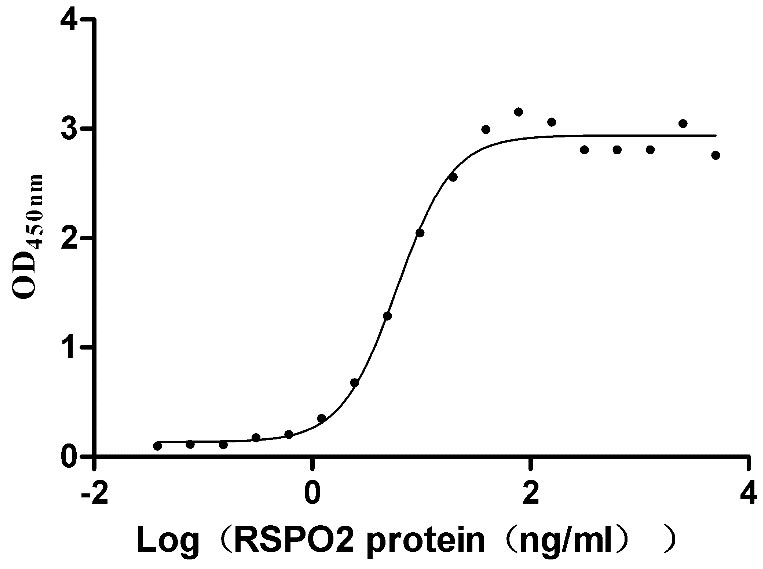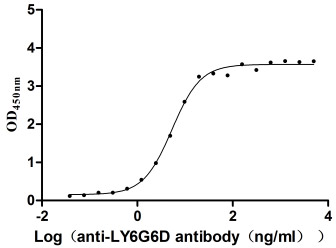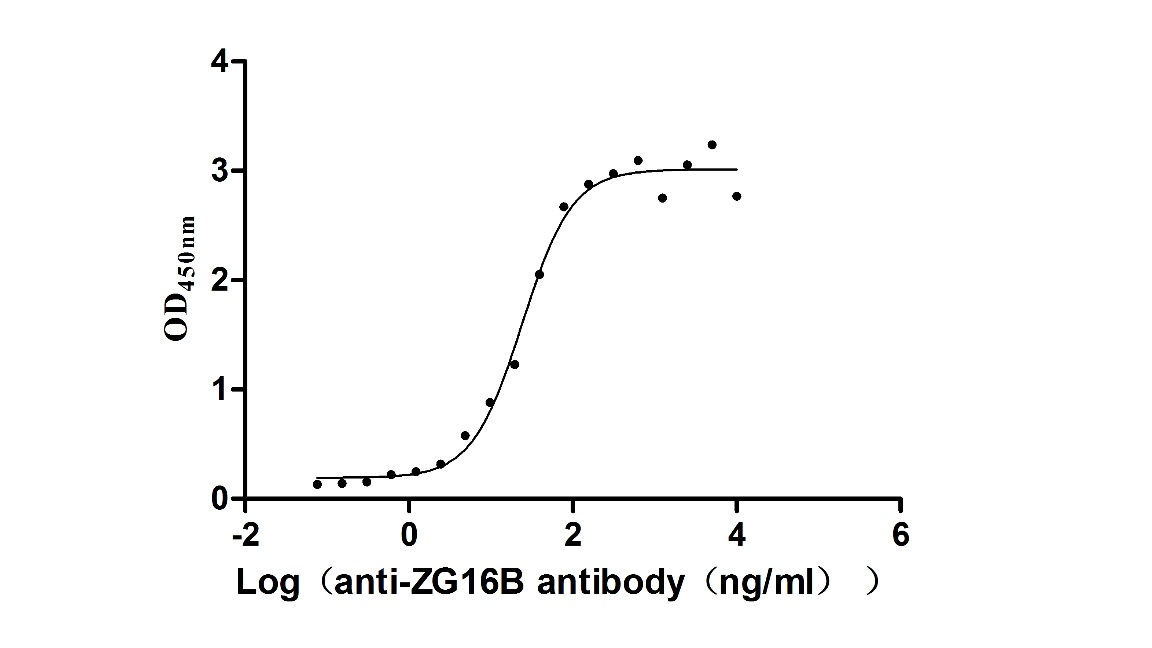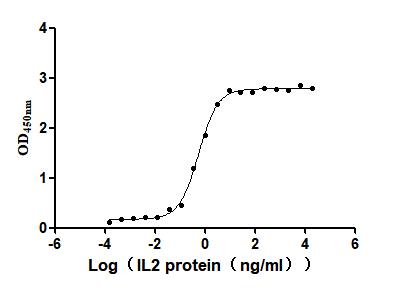Recombinant Human Staphylococcal nuclease domain-containing protein 1 (SND1), partial
-
中文名稱:人SND1重組蛋白
-
貨號(hào):CSB-YP745330HU
-
規(guī)格:
-
來(lái)源:Yeast
-
其他:
-
中文名稱:人SND1重組蛋白
-
貨號(hào):CSB-EP745330HU
-
規(guī)格:
-
來(lái)源:E.coli
-
其他:
-
中文名稱:人SND1重組蛋白
-
貨號(hào):CSB-EP745330HU-B
-
規(guī)格:
-
來(lái)源:E.coli
-
共軛:Avi-tag Biotinylated
E. coli biotin ligase (BirA) is highly specific in covalently attaching biotin to the 15 amino acid AviTag peptide. This recombinant protein was biotinylated in vivo by AviTag-BirA technology, which method is BriA catalyzes amide linkage between the biotin and the specific lysine of the AviTag.
-
其他:
-
中文名稱:人SND1重組蛋白
-
貨號(hào):CSB-BP745330HU
-
規(guī)格:
-
來(lái)源:Baculovirus
-
其他:
-
中文名稱:人SND1重組蛋白
-
貨號(hào):CSB-MP745330HU
-
規(guī)格:
-
來(lái)源:Mammalian cell
-
其他:
產(chǎn)品詳情
-
純度:>85% (SDS-PAGE)
-
基因名:SND1
-
Uniprot No.:
-
別名:100 kDa coactivator; EBNA 2 co activator (100kD); EBNA2 coactivator p100; p100; p100 co-activator; p100 coactivator; p100 EBNA2 co activator; SND 1; Snd1; SND1_HUMAN; Staphylococcal nuclease and tudor domain containing 1; Staphylococcal nuclease domain containing 1; Staphylococcal nuclease domain containing protein 1; Staphylococcal nuclease domain-containing protein 1; TDRD11; TRD 11; TRD11; Tudor domain containing protein 11; Tudor domain-containing protein 11
-
種屬:Homo sapiens (Human)
-
蛋白長(zhǎng)度:Partial
-
蛋白標(biāo)簽:Tag?type?will?be?determined?during?the?manufacturing?process.
The tag type will be determined during production process. If you have specified tag type, please tell us and we will develop the specified tag preferentially. -
產(chǎn)品提供形式:Lyophilized powder
Note: We will preferentially ship the format that we have in stock, however, if you have any special requirement for the format, please remark your requirement when placing the order, we will prepare according to your demand. -
復(fù)溶:We recommend that this vial be briefly centrifuged prior to opening to bring the contents to the bottom. Please reconstitute protein in deionized sterile water to a concentration of 0.1-1.0 mg/mL.We recommend to add 5-50% of glycerol (final concentration) and aliquot for long-term storage at -20℃/-80℃. Our default final concentration of glycerol is 50%. Customers could use it as reference.
-
儲(chǔ)存條件:Store at -20°C/-80°C upon receipt, aliquoting is necessary for mutiple use. Avoid repeated freeze-thaw cycles.
-
保質(zhì)期:The shelf life is related to many factors, storage state, buffer ingredients, storage temperature and the stability of the protein itself.
Generally, the shelf life of liquid form is 6 months at -20°C/-80°C. The shelf life of lyophilized form is 12 months at -20°C/-80°C. -
貨期:Delivery time may differ from different purchasing way or location, please kindly consult your local distributors for specific delivery time.Note: All of our proteins are default shipped with normal blue ice packs, if you request to ship with dry ice, please communicate with us in advance and extra fees will be charged.
-
注意事項(xiàng):Repeated freezing and thawing is not recommended. Store working aliquots at 4°C for up to one week.
-
Datasheet :Please contact us to get it.
相關(guān)產(chǎn)品
靶點(diǎn)詳情
-
功能:Endonuclease that mediates miRNA decay of both protein-free and AGO2-loaded miRNAs. As part of its function in miRNA decay, regulates mRNAs involved in G1-to-S phase transition. Functions as a bridging factor between STAT6 and the basal transcription factor. Plays a role in PIM1 regulation of MYB activity. Functions as a transcriptional coactivator for STAT5.; (Microbial infection) Functions as a transcriptional coactivator for the Epstein-Barr virus nuclear antigen 2 (EBNA2).
-
基因功能參考文獻(xiàn):
- SND1 may act as a potential biomarker of the therapeutic strategies utilizing COX2 inhibitors. PMID: 30365124
- SND1 physically associated with and recruited the histone acetylase GCN5 to the promoter regions of Smad2/3/4, and consequently enhanced the gene transcriptional activation of Smad2/3/4, which are essential downstream regulators in the TGFbeta1 pathway. PMID: 28263968
- Our work establishes an oncogenic role for SND1 in promoting tumor-initiating cell formation in hepatocellular carcinoma PMID: 28428278
- Findings indicate the potential values of microRNA miR-320a, staphylococcal nuclease domain-containing 1 (SND1) and beta-catenin as prognostic biomarkers and therapeutic candidates for malignant gliomas. PMID: 28160566
- These results highlight SND1 as a potential regulator of cellular cholesterol distribution and homeostasis in hepatoma cells, and support the rationale for the therapeutic use of molecules that influence cholesterol management when SND1 is overexpressed. PMID: 27238764
- SND1 is a determinant downstream effector of TNFalpha that contributes to support glycerophospholipid homeostasis in human hepatocellular carcinoma during inflammation. PMID: 26323317
- it could be concluded that miR-361-5p functions as a tumor-suppressive miRNA through directly binding to SND1 PMID: 25965817
- we identified a new SND1-BRAF fusion that appeared to be present in a subpopulation of tumor cells. PMID: 25985019
- Study is the first to show a novel regulatory role of SND1, a direct target of miR-184, in glioma progression, suggesting that the miR-184/SND1 axis may be a useful diagnostic and therapeutic tool for malignant glioma. PMID: 25216670
- SND1 promoted expression of the E3 ubiquitin ligase Smurf1, leading to RhoA ubiquitination and degradation. PMID: 25596283
- we describe the crucial role of SND1 in cancer development and progression, and highlight SND1 as a potential target for therapeutic intervention. PMID: 25405367
- Single nucleotide polymorphism in SND1 gene is associated with osteosarcoma susceptibility. PMID: 25663449
- Tudor-SN is a potential substrate of G1/S phase Cyclin-Dependent Kinases, and promotes cell cycle progression by facilitating E2F-1-mediated gene transcription. PMID: 25627688
- Promoter activity of the cell growth- and RNA-protection associated SND1 gene is up-regulated by ER stress in human hepatoma cells PMID: 25494629
- Tudor-SN regulates the aggregation dynamics of poly(A(+) mRNA-containing stress granules and selectively stabilizes the stress granules-associated mRNA during cellular stress. PMID: 25559396
- The transcriptional co-activator SND1 is a novel regulator of alternative splicing in prostate cancer cells. PMID: 23995791
- MTDH supports the survival of mammary epithelial cells under oncogenic/stress conditions by interacting with and stabilizing SND1. PMID: 24981741
- Tudor-SN plays an important role in the assembly of AGTR1-3'UTR granules. Moreover, endogenous Tudor-SN knockdown can decrease the recovery kinetics of AGTR1-3'UTR granules. PMID: 24815690
- High Tudor-SN expression is associated with breast cancer. PMID: 24155205
- High SND1 expression is associated with hepatocellular carcinoma. PMID: 23878061
- SND1 silencing resolved this block in processing and induced an increase in mature miRs. Together, SND1 might be the missing link between hypoxia and the differential regulation of miRNA processing PMID: 23770094
- a transcriptional network associated to the key transcription factors NF-kappaB, Sp1 and NF-Y that operates in the control of the SND1 gene expression PMID: 23160072
- The increased expression of MTDH and/or SND1 is closely related to carcinogenesis, progression, and prognosis of colon cancer. PMID: 23065261
- SND1 promotes tumor angiogenesis in human hepatocellular carcinoma through novel pathway that involves nuclear factor kappaB and miR-221 PMID: 22396537
- this novel B-Raf fusion protein (SND-1 was identified as the B-Raf fusion partner) presents a novel target with potential clinical implications in the treatment of patients resistant to c-Met inhibitors. PMID: 21936566
- SND1 as a novel MTDH-interacting protein and shown that it is a functionally and clinically significant mediator of metastasis. PMID: 21478147
- These results provide evidence that p100 interacts with the 3' UTR of dengue virus and is required for normal dengue virus replication. PMID: 21148275
- The coacitivator p100 protein can interact with STAT6 through its SN domain both in vivo and in vitro, resulting in enhancement of STAT6-mediated gene transcriptional acitivation. PMID: 20225206
- These findings identify p100 as a novel coactivator for STAT6 and suggest that p100 functions as a bridging factor between STAT6 and the basal transcription machinery. PMID: 12234934
- p100 has an important role in the assembly of STAT6 transcriptosome, and that p100 stimulates IL-4-dependent transcription by mediating interaction between STAT6 and CBP and recruiting chromatin modifying activities to STAT6-responsive promoters PMID: 15695802
- The p100 protein is a novel dual function regulator of gene expression that participates via distinct domains in both transcription and splicing. PMID: 17576664
- The tudor and SN (TSN) domain of p100 interacts with U small nuclear ribonucleoprotein (snRNP) complexes, suggesting a role for p100 in the processing of precursor messenger RNA. PMID: 17632523
- Data showed remarkable up-regulation of SND1 mRNA in human colon cancer tissues, even in early-stage lesions, and also in colon cancer cell lines. PMID: 17909068
- Tudor-SN requires tandem repeats of SN domains for its RNA binding and cleavage activity. PMID: 18453631
- SND! represents promising prostate cancer biomarker and therapeutic target. PMID: 19435788
顯示更多
收起更多
-
亞細(xì)胞定位:Cytoplasm. Nucleus. Melanosome.
-
組織特異性:Ubiquitously expressed.
-
數(shù)據(jù)庫(kù)鏈接:
Most popular with customers
-
Recombinant Human T-cell antigen CD7 (CD7), partial (Active)
Express system: Mammalian cell
Species: Homo sapiens (Human)
-
Recombinant Human E3 ubiquitin-protein ligase ZNRF3 (ZNRF3), partial (Active)
Express system: Mammalian cell
Species: Homo sapiens (Human)
-
Recombinant Human Intestinal-type alkaline phosphatase (ALPI) (Active)
Express system: Mammalian cell
Species: Homo sapiens (Human)
-
Recombinant Mouse Retinol-binding protein 4 (Rbp4) (Active)
Express system: Mammalian cell
Species: Mus musculus (Mouse)
-
Recombinant Human V-set and immunoglobulin domain-containing protein 4 (VSIG4), partial (Active)
Express system: Mammalian cell
Species: Homo sapiens (Human)
-
Recombinant Macaca fascicularis lymphocyte antigen 6 family member G6D (LY6G6D) (Active)
Express system: Yeast
Species: Macaca fascicularis (Crab-eating macaque) (Cynomolgus monkey)
-
Recombinant Macaca fascicularis zymogen granule protein 16 homolog B (ZG16B) (Active)
Express system: Mammalian cell
Species: Macaca fascicularis (Crab-eating macaque) (Cynomolgus monkey)
-
Recombinant Human Interleukin-2 (IL2) (Active)
Express system: Mammalian cell
Species: Homo sapiens (Human)



















